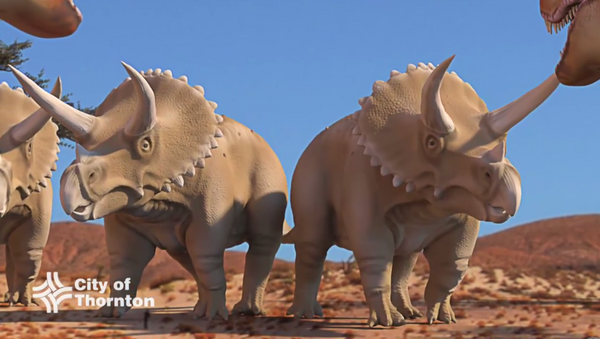Shocked by their discovery, officials then reached out to paleontologists from Denver's Museum of Nature and Science, which arrived on the scene the following Monday to confirm workers had, in fact, uncovered a fossil.
— City of Thornton (@CityofThornton) August 29, 2017
"A lot of times these will be plowed up and they won't be recognized," Joe Sertich, the museum's Curator of Dinosaurs, said in a statement. "We're really lucky in this case that it was recognized as fossils and we got the call."
Upon examination, Sertich says the triceratops had to be at least 66 million years old — unusual, considering most fossils found in the Denver area date back only 10,000 to 12,000 years.
According to officials, the difference in age has to do with construction crews digging deeper for their latest project than they normally do for other structures such as parking lots.
"This is probably one of only three skulls of triceratops found along the Front Range area," Sertich said. "My heart was racing. I realized it was a pretty important dinosaur find."
The Front Range is an area within the Southern Rocky Mountains where excavators have in the past found dinosaur remnants.
"The DMNS scientists will stabilize the area, carefully expose the fossil, look for any other bones that remain, and safely extract them," city officials announced.
For Sertich, once the bones are officially extracted from the area, his hope is that the new findings will be housed at the Denver Museum of Nature and Science.
"We're going to get it out of the ground and get it cleaned up, and hopefully get it re-housed at the Denver Museum in nice, shiny, new cabinets," Sertich said.



